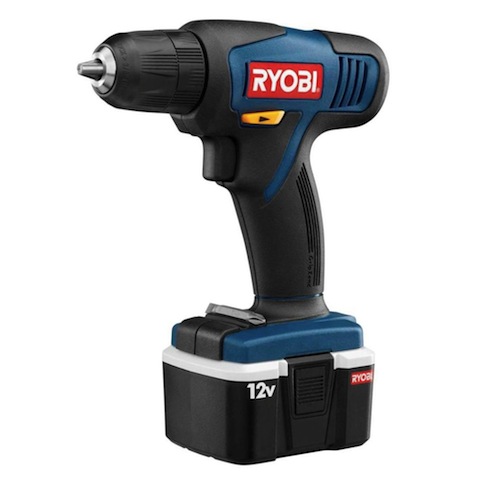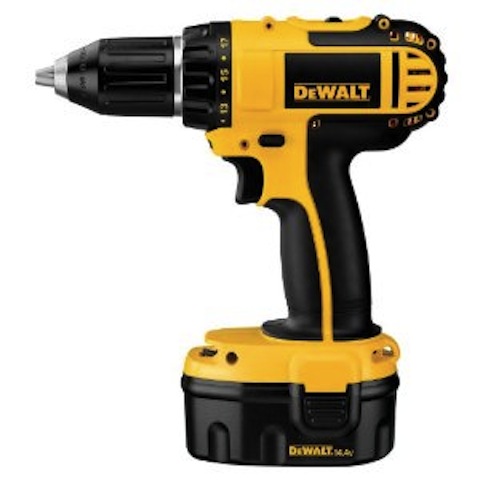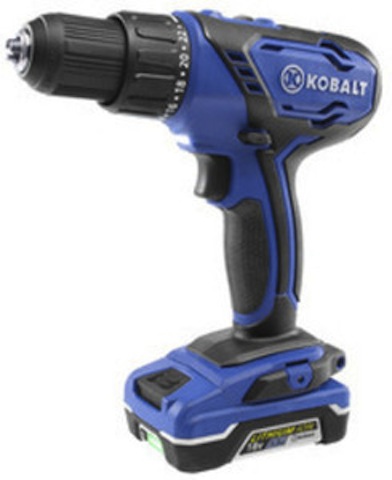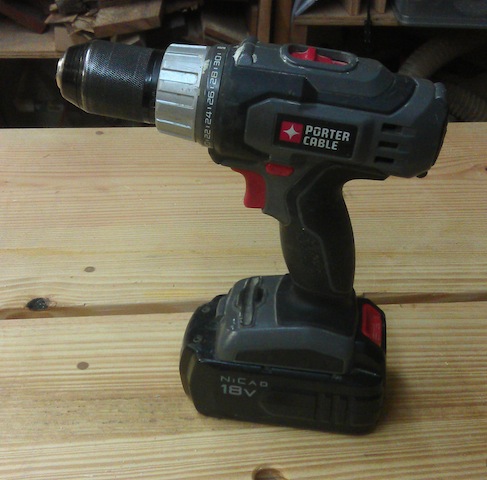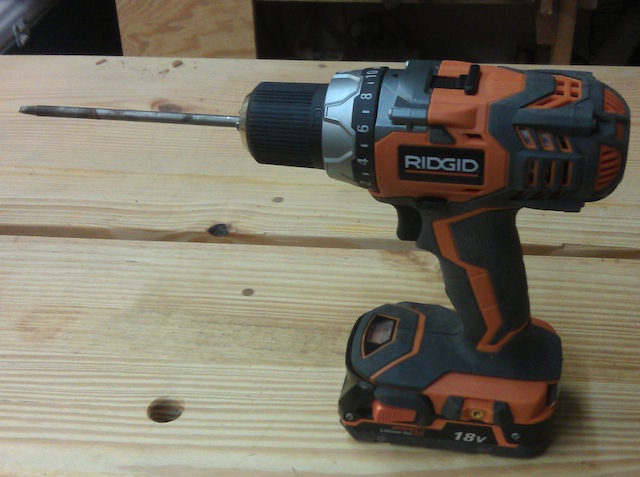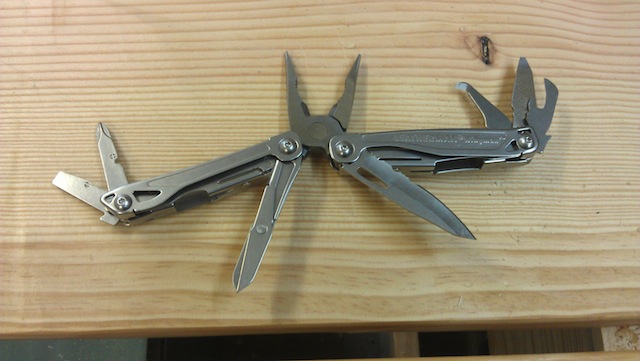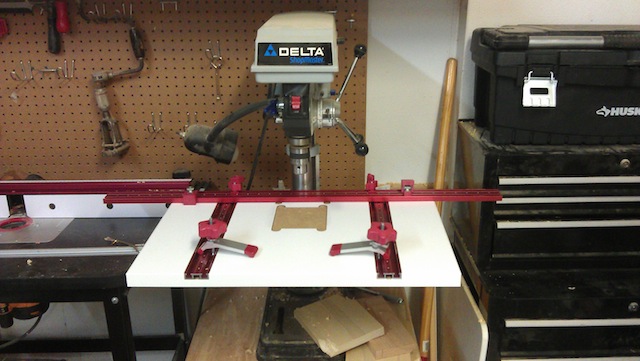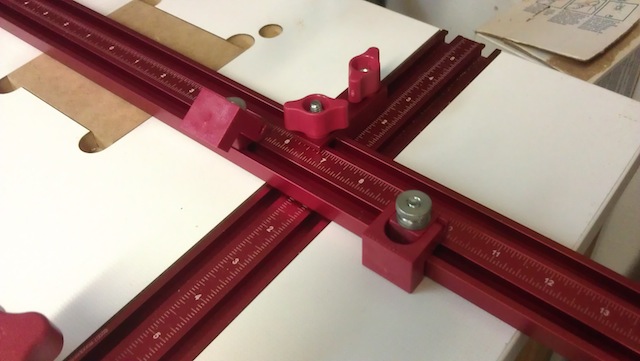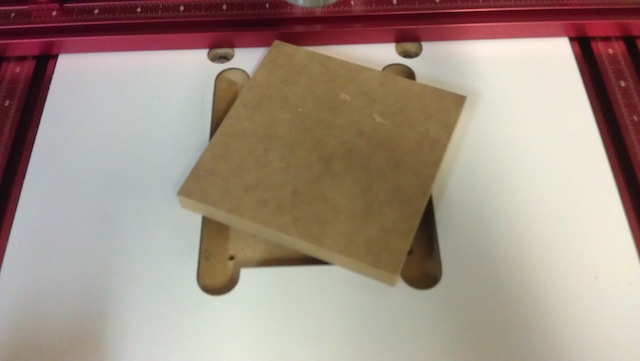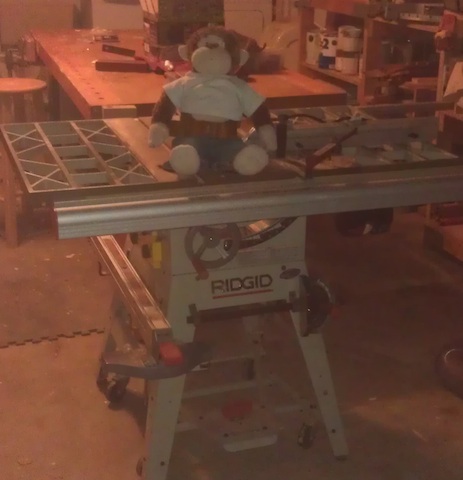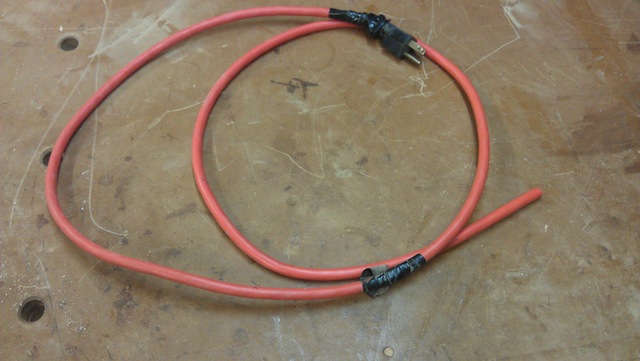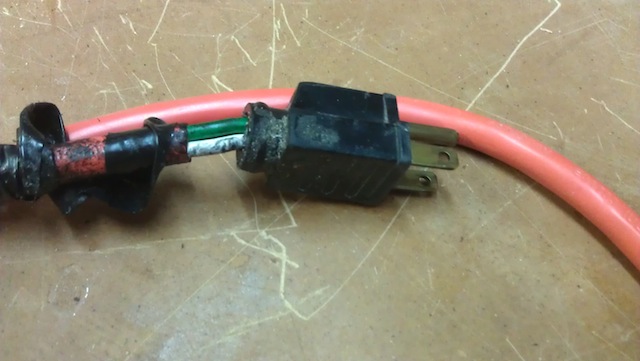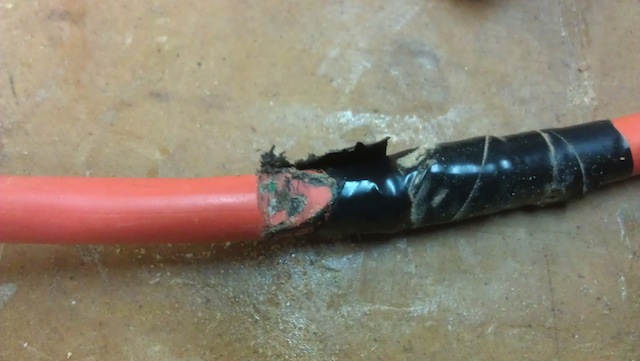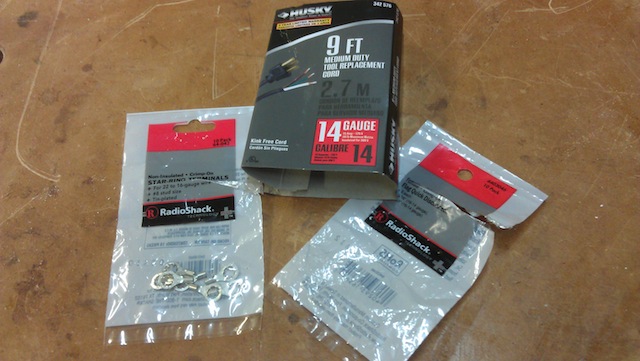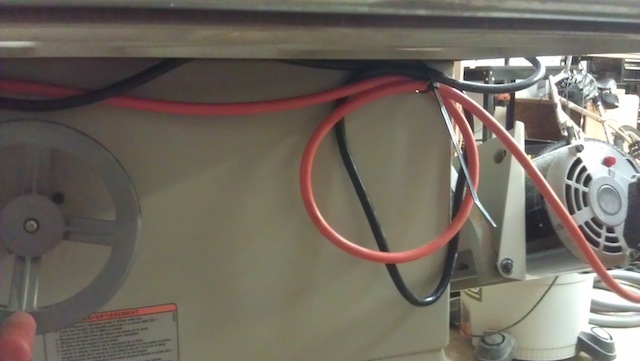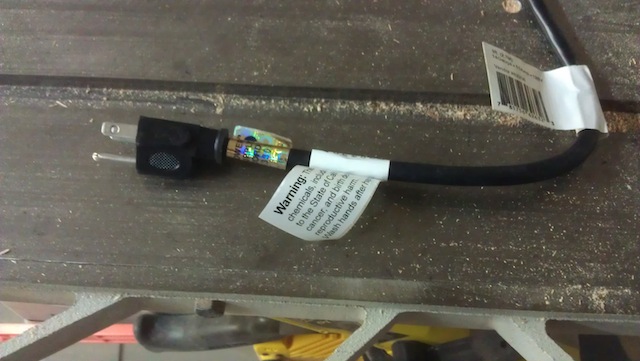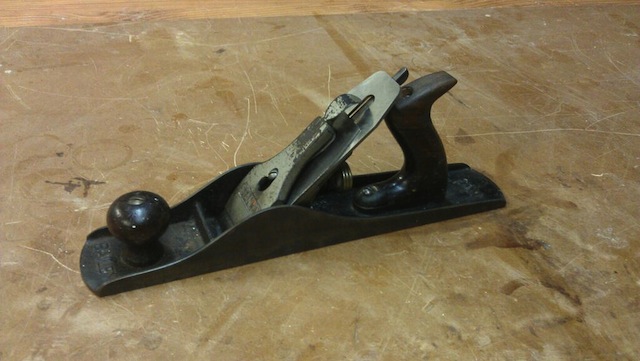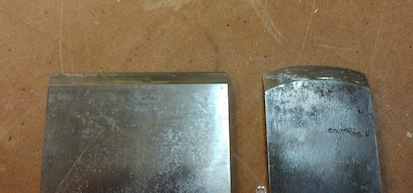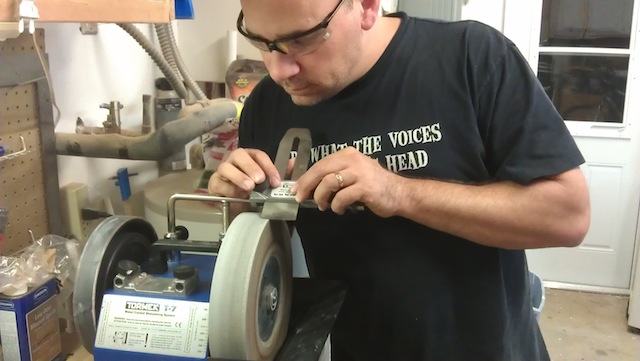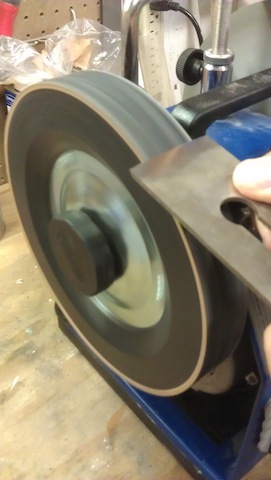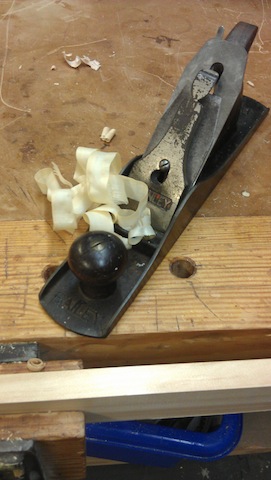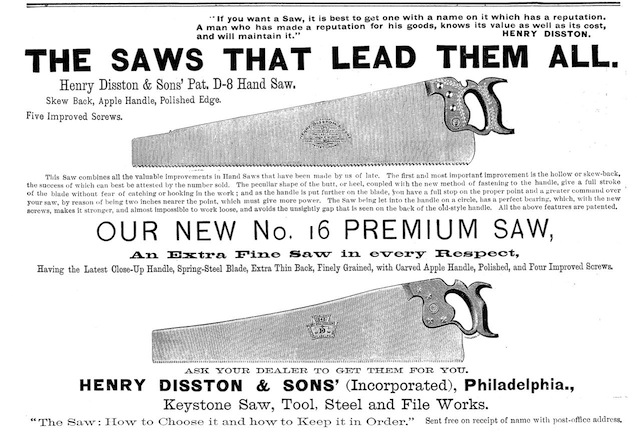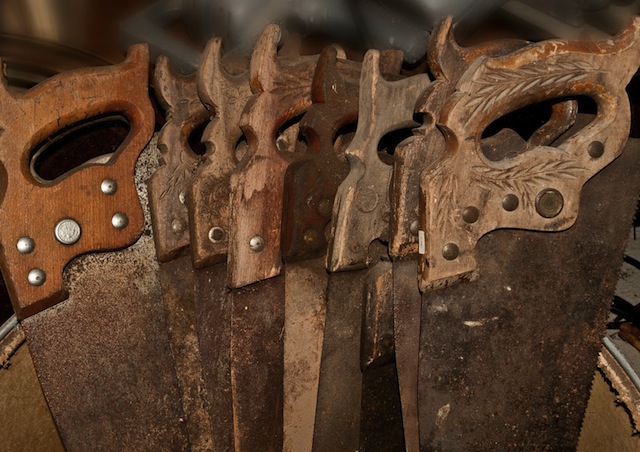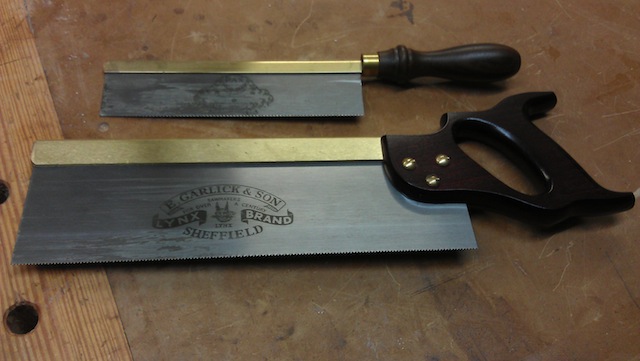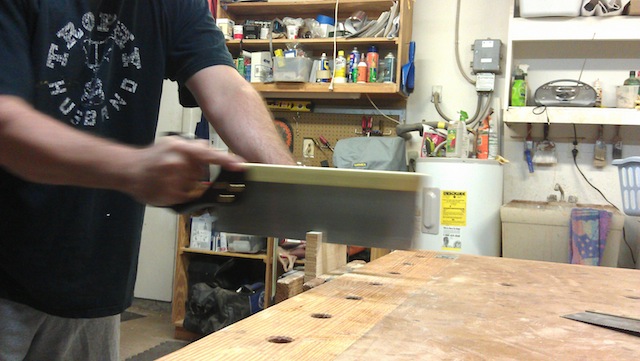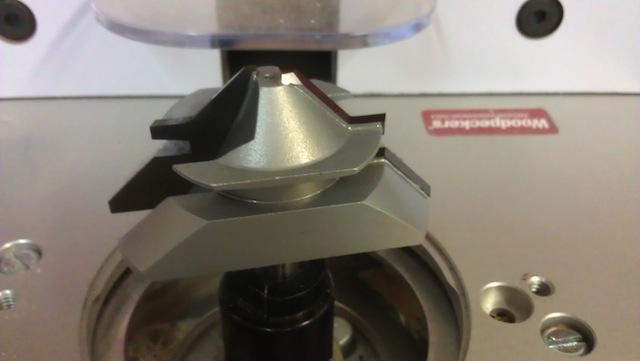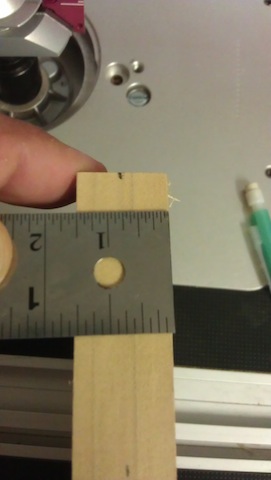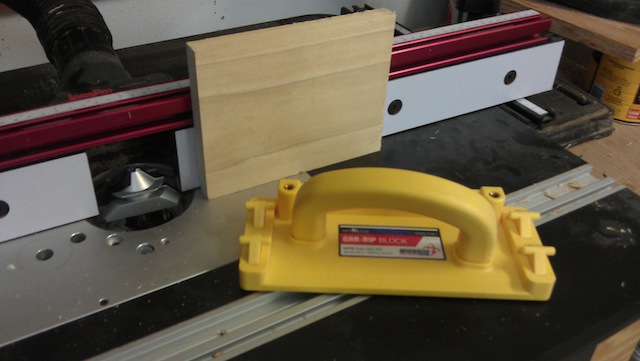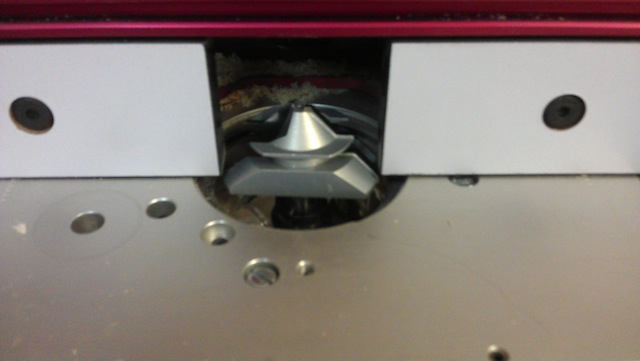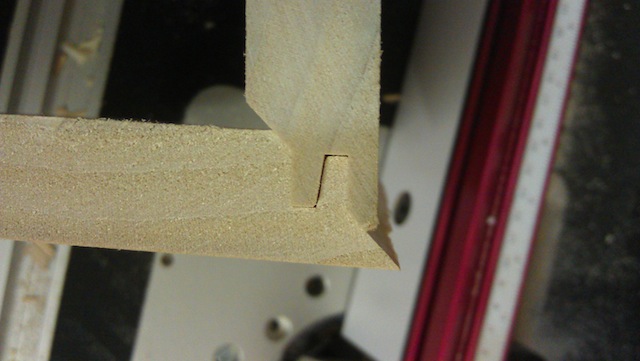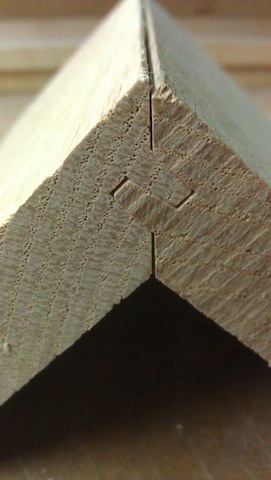One of the greatest things about building a built-in project is that you can put it into use before the piece is totally done. And, since I installed the boxes on our front entertainment center, we have been using the piece to hold our TV, stereo, Blu-Ray player and other goodies.
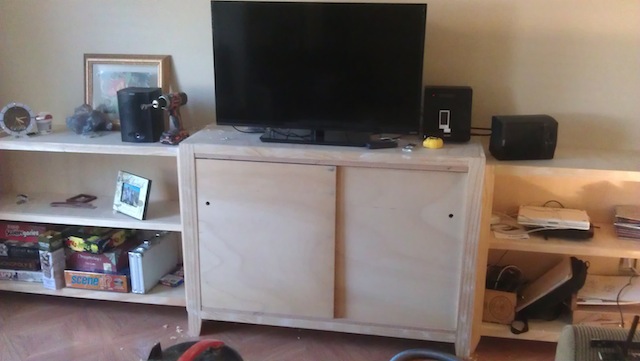 The bad part? Well, when you have to do more work on things, you have to move all of those goodies around to keep them out of harm’s way. I have been drilling holes to feed cables into the setup, tacking down wires and doing other tasks required to get things in order.
The bad part? Well, when you have to do more work on things, you have to move all of those goodies around to keep them out of harm’s way. I have been drilling holes to feed cables into the setup, tacking down wires and doing other tasks required to get things in order.
Of course, one important thing that is coming up is sanding. Now, I would normally never give sanding a second thought – in my shop. But, in the living area of the house, keeping dust under control is going to be a big deal. After all, getting sawdust in the electronics, all over the surfaces and in the air is a big no-no.
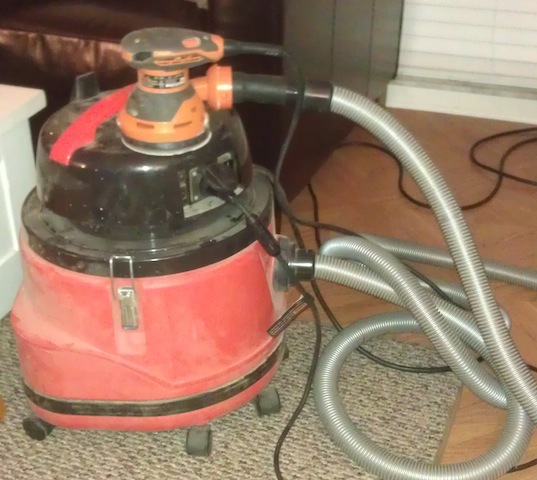 That’s why I am happy that I have a dedicated dust extractor for the random orbit sander. I got this when my friend Paul and I were working on his office system, and it had proven its worth time and time again in the shop. The collector hooks up to the sanders, saws and router table and keeps the dust and chips down to a manageable level. Even better, it has an outlet on it that you can plug the tool into which triggers the collector when you turn the tool on, and stops the collector five seconds after you release the trigger.
That’s why I am happy that I have a dedicated dust extractor for the random orbit sander. I got this when my friend Paul and I were working on his office system, and it had proven its worth time and time again in the shop. The collector hooks up to the sanders, saws and router table and keeps the dust and chips down to a manageable level. Even better, it has an outlet on it that you can plug the tool into which triggers the collector when you turn the tool on, and stops the collector five seconds after you release the trigger.
But, would it work on the house?
 This past weekend, after a few fun family events, we put the collector and sander to the test. Actually, I say ‘we’, but Rhonda offered to do the sanding, and I was more than happy to turn the task over to her. With a 150 grit pad on the random orbit sander loaded on, she proceeded to take care of business. She was able to level any irregularities in the joints, break the edges and get everything nice and smooth.
This past weekend, after a few fun family events, we put the collector and sander to the test. Actually, I say ‘we’, but Rhonda offered to do the sanding, and I was more than happy to turn the task over to her. With a 150 grit pad on the random orbit sander loaded on, she proceeded to take care of business. She was able to level any irregularities in the joints, break the edges and get everything nice and smooth.
The best part? No dust wafting through the house. This is great.
Fortunately, there isn’t much more to do on this project. Some finishing touches, priming and painting on the cases, and building three solid oak tops for the pieces, and we can move to decorating and cable dressing the piece.
Then we can really start living with the entertainment center.

